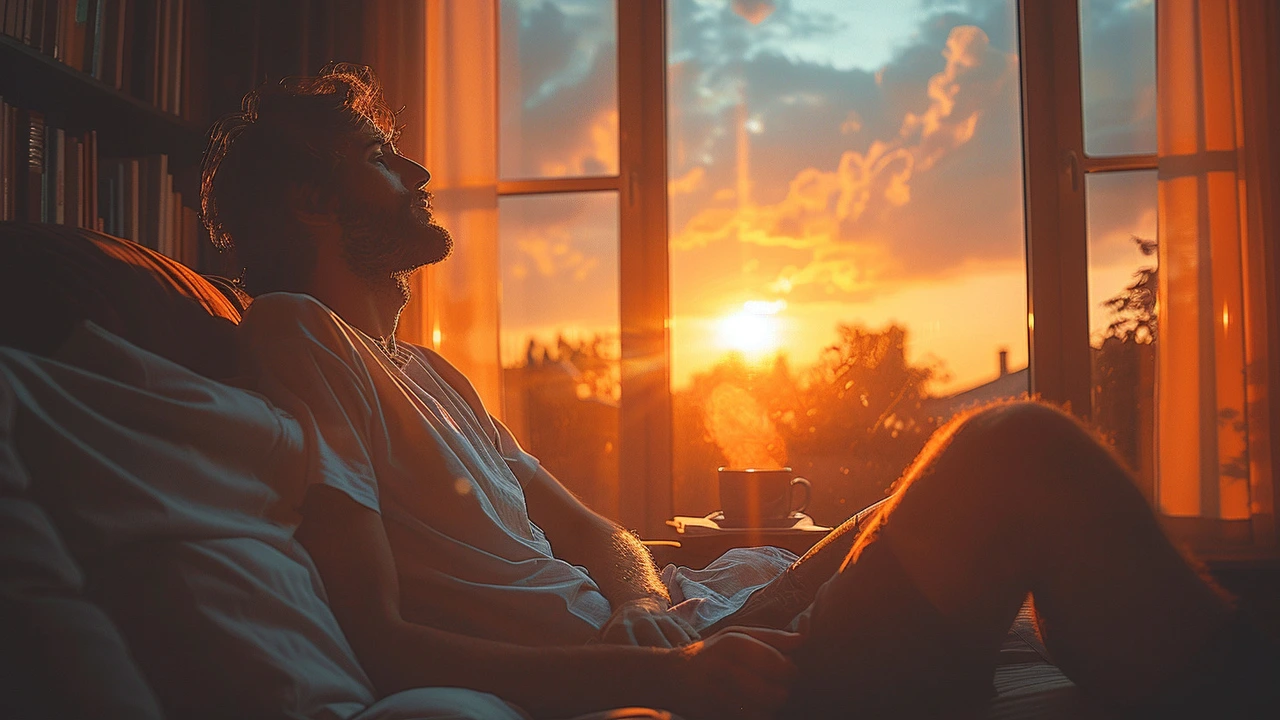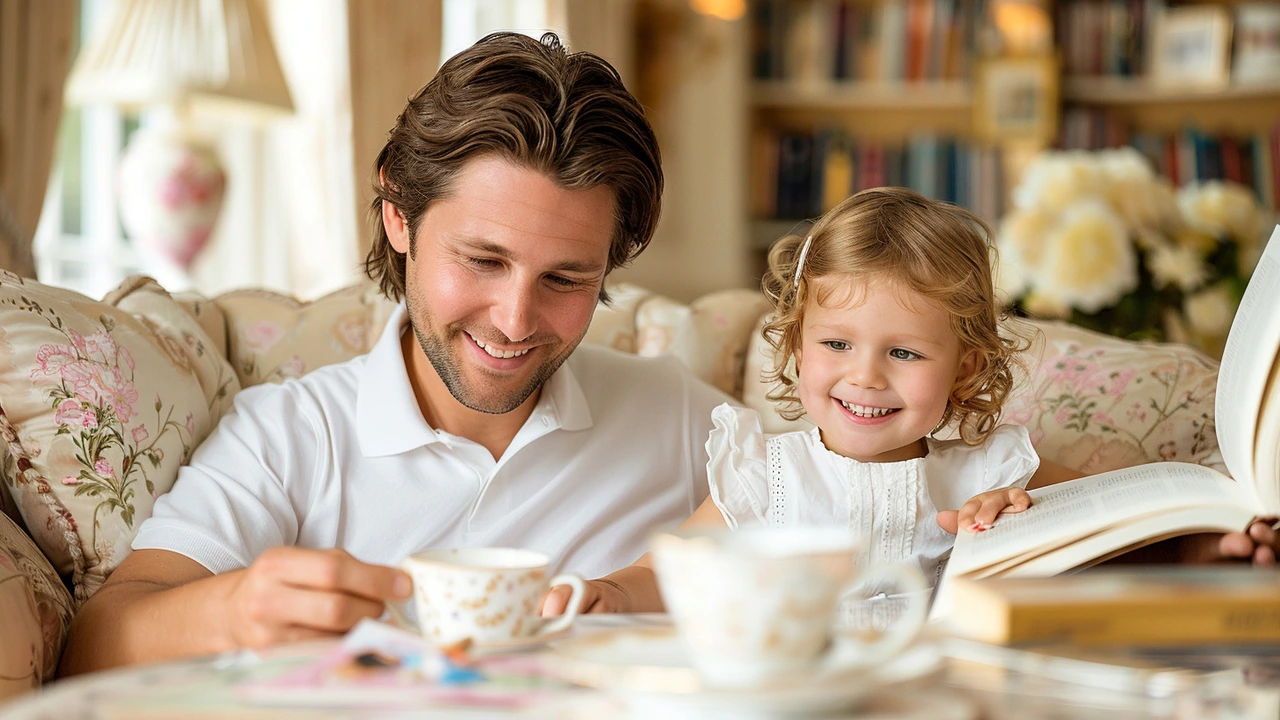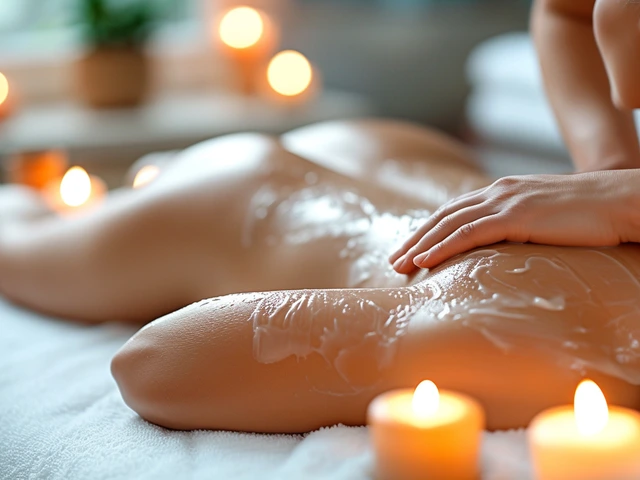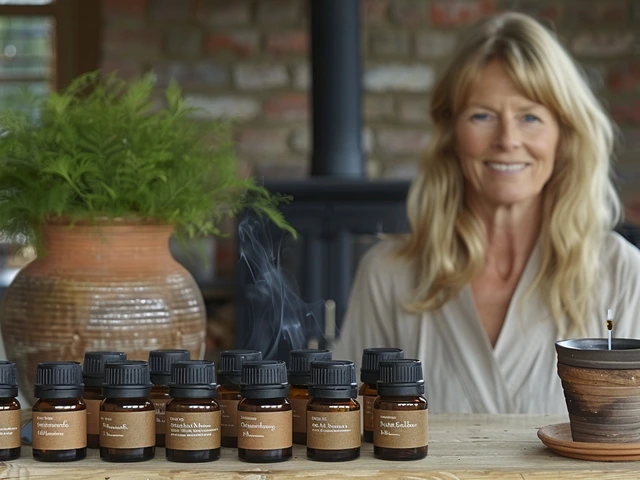Reflexology for Kids: Essential Insights for Parents
For many parents, the idea of using reflexology to improve their child's well-being might seem unconventional. Reflexology is an ancient practice that applies pressure to specific points on the feet, hands, and ears, which are believed to correspond with different parts of the body.
It's worth considering how this gentle therapy could benefit your child. More and more parents are exploring reflexology as a way to help their children manage stress, anxiety, and various physical ailments.
Whether you're new to the concept or already curious about its benefits, this guide will walk you through the basics, potential benefits, and practical tips for getting started with reflexology for kids.
- Understanding Reflexology
- Benefits for Children
- Common Reflexology Techniques
- How to Incorporate Reflexology at Home
- Safety Tips
- Finding a Qualified Reflexologist
Understanding Reflexology
Reflexology, often referred to as zone therapy, is based on the idea that specific areas on the feet, hands, and ears, known as reflex points, are linked to other parts of the body. When a reflexologist applies pressure to these points, it is believed to have a therapeutic effect on the corresponding organs, glands, and systems. This practice has roots in ancient civilizations like Egypt and China, where illustrations and documents suggesting foot massage techniques have been found.
Modern reflexology as we know it today began taking shape in the early 20th century. Dr. William H. Fitzgerald, an ear, nose, and throat specialist, introduced zone therapy to America. He believed that applying pressure to certain areas could alleviate pain and improve overall health. Later, Eunice Ingham, a physiotherapist, mapped the entire body on the feet and developed specific reflexology techniques.
The underlying principle of reflexology is that our body can heal itself when blockages are removed and energy pathways are balanced. By applying pressure to precise points, reflexologists aim to restore the natural flow of energy, reduce stress, and promote relaxation. Reflexology is not a diagnostic tool but rather a complementary therapy that supports traditional medical treatments. It's also considered safe and non-invasive, making it an appealing option for parents.
Reflexology for Kids: One might wonder how reflexology specifically benefits children. Because kids are often more responsive to touch and less encumbered by stress than adults, they may exhibit faster and more noticeable responses to reflexology sessions. Common benefits observed in children include better sleep, reduced anxiety, improved digestion, and assistance with common ailments like earaches and headaches.
In a statement by the Reflexology Association of America, it was noted that,
"Reflexology is particularly well-suited to helping children with stress-related issues, given their natural responsiveness to touch and reduced levels of tension compared to adults."This highlights how touch-based therapies can be exceptionally therapeutic for younger individuals.
The Role of a Reflexologist: A trained reflexologist tailors each session to the individual needs of the child. They use their fingers and thumbs to apply pressure using techniques that vary according to the child’s age and specific health concerns. During a session, parents are often allowed to stay with their child to provide comfort and support.
Reflexology is not just about physical touch; it incorporates a holistic approach, examining emotional and mental well-being. Since children have unique needs, sessions may be shorter and more frequent compared to adults. Experienced reflexologists will often use creative storytelling or incorporate toys to make the session enjoyable and less intimidating for little ones.
The science behind reflexology may still be a topic of ongoing research, but many parents and practitioners believe in its benefits. Its gentle, non-invasive nature means it can complement other treatments and therapies. While it’s always important to consult with healthcare professionals before starting any new treatment, reflexology can offer a tranquil journey toward better health and well-being.
Benefits for Children
Why choose reflexology for your child? This gentle therapy brings a range of potential benefits that cater to both the physical and emotional well-being of children. One of the key advantages is its ability to help children relax. In today's fast-paced world, kids experience stress and anxiety more than ever, and reflexology offers a soothing way to calm their minds.
Reflexology isn't just about relaxation—it's also a powerful tool for managing pain. Various studies have shown that applying pressure to specific points can help alleviate discomfort from conditions such as headaches, growing pains, and even digestive issues. A child's body is rapidly developing, and these pressure points can play a significant role in maintaining balance and easing any emerging pains.
Beyond pain and stress relief, reflexology can boost a child's immune system. By stimulating the corresponding reflex areas, this practice can promote better circulation and lymphatic drainage, which are crucial for a strong immune response. This means fewer sick days and a generally healthier child.
Another fascinating benefit is improved digestion. Children often suffer from tummy troubles, whether it's constipation, bloating, or other gastrointestinal issues. Reflexology offers a gentle way to support their digestive systems. By targeting specific points on their feet and hands, you can help your child digest food more efficiently and reduce discomfort.
Sleep is another area where reflexology shines. Good quality sleep is essential for a child's growth and development. Regular reflexology sessions can help regulate sleep patterns, making it easier for your child to fall asleep and stay asleep throughout the night. This results in better energy levels and mood the following day.
Better focus and concentration are also linked to reflexology. In a classroom setting, children need to stay attentive and engaged. Reflexology can help improve mental clarity and focus by calming the nervous system and promoting a balanced state of mind.
When considering these benefits, it's clear why many parents are turning to reflexology as a complementary approach to traditional healthcare. It's a non-invasive practice that works in harmony with the body's natural processes. If you're looking for a holistic way to enhance your child's overall well-being, reflexology is worth exploring.

Common Reflexology Techniques
When it comes to reflexology techniques for kids, it's essential to focus on methods that are both gentle and effective. The basic idea is to apply mild pressure to specific areas on the feet, hands, or ears, which can boost overall well-being and target specific issues.
One popular method is the thumb walking technique. You use your thumb to apply steady pressure, inching it along the reflex zones. Start by pressing firmly in one spot, then move a little forward, keeping the pressure consistent. This technique is especially helpful for targeting larger areas like the arch of the foot, which is tied to digestive health.
Another effective method is the rotational technique. Here, you press a point using your thumb or finger and rotate it in small circles. This technique works wonders for tension relief and can be especially useful on the hands, which are full of nerve endings connected to various parts of the body.
The hook and back-up technique is also worth mentioning. This involves hooking your thumb into a reflex point and gently pulling back. It's a bit like giving the body a cue to start healing itself. Most often used for sinus and headache relief, this technique can be quite soothing when your child has a cold or allergies.
“Reflexology has this amazing ability to reach the places that hands sometimes can't, offering a layer of healing that works from the inside out,” says Laura Norman, a respected reflexologist.
While the techniques are straightforward, consistency is key. Make reflexology a regular part of your child's routine by incorporating these methods once or twice a week. You might be amazed at the difference it makes. Of course, it's crucial to be gentle and listen to your child’s feedback. Reflexology should be a calming, enjoyable experience for them.
It's also helpful to keep sessions short. Start with 5 to 10 minutes, gradually increasing the time as your child becomes more accustomed to the practice. Always check for signs of discomfort and adjust your pressure accordingly.
For best results, consider combining these techniques. For example, you could start with the thumb walking technique on the feet, move to the rotational technique on the hands, and then finish off with the hook and back-up technique. This holistic approach ensures you are covering all the essential reflex points.
Using some simple tools can also enhance the experience. A soft rubber ball rolled under the feet can offer additional stimulation and fun. You might even find that your child looks forward to these sessions, turning them into a special bonding time for both of you.
How to Incorporate Reflexology at Home
Introducing reflexology into your child's daily or weekly routine can be a rewarding and bonding experience. The best part? You don't need to be an expert to get started. Begin by educating yourself about the pressure points, also known as reflex zones, that correspond with different organs and systems in the body. You can find useful charts and guides online or in reflexology books specifically tailored for parents and children.
Before starting a session, ensure your child is calm and comfortable. Perhaps after a warm bath or in the evening before bed. Create a relaxing environment with soft lighting and calming music. Begin by gently washing and drying their feet. Use a natural, unscented lotion or oil to avoid skin irritation, and warm the lotion in your hands before applying it. During the session, maintain a gentle but firm pressure, and communicate with your child to ensure they're comfortable at all times.
One effective technique is the 'thumb walking' method. This involves using your thumb to apply pressure while moving it in small, caterpillar-like steps. Focus on one foot at a time, starting at the toes and working your way down to the heel. You'll want to spend extra time on areas that correspond with common childhood complaints, such as the stomach or head. For example, the upper part of the big toe corresponds to the brain, and a gentle massage here can promote relaxation and improve mental clarity.
“Introducing reflexology to your child can be an easy and enjoyable way to enhance their health and wellbeing,” says Dr. Laura Norman, a renowned reflexologist and author.
Incorporating reflexology isn't just about the physical benefits; it's also an excellent way for parents and children to bond. It's an opportunity to spend quiet, focused time together, away from screens and daily distractions. As you practice, you will likely notice that your child looks forward to these calming moments. This anticipation can be particularly beneficial for children who struggle with anxiety or high energy levels.
If you're concerned about performing reflexology correctly, consider taking an online class or attending a workshop. Some communities offer parent-child reflexology classes that can help you feel more confident in your skills. Additionally, consult with a certified reflexologist who can provide personalized guidance and tips.
Tools and Resources
Several tools can assist you in your reflexology practice. Reflexology tools, like wooden sticks or specialized massage balls, can be helpful. These tools are designed to pinpoint the reflex zones with precision. Books and online videos are valuable resources that provide visual demonstrations, which can be particularly helpful if you're a visual learner.
Remember to keep track of your child’s reactions and progress. Maintain a simple journal where you note their mood, any relief of symptoms, and overall response to the sessions. This can help you adjust your techniques and focus areas as needed.
Incorporating reflexology at home can be a rewarding way to support your child's health holistically. It can become a cherished part of your family routine, providing physical relief and emotional connection. With a little practice and patience, you can unlock the many benefits of this gentle, ancient therapy.

Safety Tips
When it comes to practicing reflexology on children, safety is paramount. Understanding the specifics can help ensure a positive and beneficial experience. It's vital to remember that while reflexology can be very gentle and soothing, children have more sensitive and tender spots compared to adults.
First, always consult with your pediatrician before starting any new treatment, including reflexology. This is crucial to rule out any underlying conditions that might make certain techniques inappropriate for your child. Doctors can provide valuable insights into whether reflexology might interact with other treatments your child is receiving.
Use light pressure when applying reflexology techniques on children. Children's skin and muscles are more delicate, so heavy pressure could cause discomfort or even bruising. A good rule of thumb is to start slow and gently, adjusting as your child provides feedback.
Be aware of your child's reactions during and after a reflexology session. If they express any discomfort or show signs of distress, stop the session and consult your healthcare provider. Sometimes even gentle pressure can be too much, depending on the child's condition and sensitivity levels.
Keep sessions short and sweet. Children's attention spans are generally shorter than adults, so it's wise to keep reflexology sessions brief — typically around 5 to 10 minutes for younger kids and up to 20 minutes for older ones. This keeps the activity enjoyable and prevents any unnecessary strain.
Choosing the Right Environment
Set up a calming environment to make the reflexology session more effective. Play soothing music, use soft lighting, and ensure the room is at a comfortable temperature. Comfort and relaxation are key aspects of reflexology, and creating a soothing environment can enhance the overall experience for your child.
Communicate clearly with your child about what to expect during the session. Explain that you will be pressing on certain points of their feet, hands, or ears and assure them they can tell you if anything feels uncomfortable. This open line of communication helps build trust and ensures your child feels secure throughout the session.
Finding Professional Help
If you're new to reflexology, consider consulting a trained reflexologist for the first few sessions. This provides an opportunity to learn proper techniques and gain confidence before attempting it yourself at home. A professional can demonstrate safe pressure points and appropriate methods tailored specifically for children.
"Reflexology can be a very gentle and supportive therapy for kids, but it's essential to approach it with caution and mindfulness," says Dr. Jane Phillips, a well-known pediatric healthcare expert.
Remember, reflexology is meant to be a fun and relaxing way to bond with your child while potentially providing some health benefits. Always prioritize their comfort and safety above all else.
Finding a Qualified Reflexologist
When it comes to the well-being of your child, it's essential to make sure they are in the hands of an experienced and qualified reflexologist. But how do you find the right one? Starting with proper research is key. Look for practitioners who are certified by reputable organizations such as the American Reflexology Certification Board (ARCB). These certifications ensure the reflexologist has undergone rigorous training and adheres to high ethical standards.
Another good starting point is to ask for recommendations from friends, family, or other parents who have tried reflexology for their children. Personal referrals can be incredibly valuable because they provide firsthand insights into the practitioner’s skills and bedside manner. Social media groups and online communities focused on holistic health or parenting can also be a rich resource for referrals.
Once you have a few names, it's a good idea to check their websites or profiles. A well-documented professional background, along with positive testimonials, can offer more assurance about their capabilities. Make sure they have experience specifically in treating children, as techniques and approaches can differ from adult treatments. Specialized pediatric reflexologists understand the unique needs and concerns of younger clients, which can make a significant difference in the effectiveness of the therapy.
When you've narrowed down your options, consider scheduling a preliminary consultation. This meeting allows you to discuss any specific concerns you have and see how the reflexologist interacts with your child. Notice if they are patient, listen attentively, and make your child feel comfortable. This initial interaction can provide a lot of insight into whether the reflexologist is a good fit for your family.
Don't hesitate to ask questions during your consultation. Inquire about their specific training, experience, and approach to reflexology for kids. A reputable reflexologist will be transparent about their methods and happy to explain the techniques they use. You should also discuss the expected outcomes and any potential side effects. While reflexology is generally safe, understanding what to expect can help you make an informed decision.
Cost is another factor that can influence your choice. Reflexology sessions can vary widely in price, so it's important to know the fees upfront and whether they fit within your budget. Some practitioners offer packages or sliding scale fees to make the therapy more accessible. Always ask if there are any additional costs you should be aware of to avoid surprises later on.
As Dr. Elizabeth Smith, an expert in pediatric holistic health, says, "Finding a reflexologist who specializes in children not only ensures safety but also enhances the therapeutic outcomes for the child."
Finally, trust your instincts. If something doesn’t feel right to you or your child isn’t comfortable, it’s okay to look for another reflexologist. The process of finding the right professional may take time, but the benefits your child can gain from effective and compassionate reflexology are well worth the effort. Remember, your child’s comfort and well-being are paramount. By taking the time to carefully select a qualified reflexologist, you are making an important step towards fostering their health and happiness.







Comments